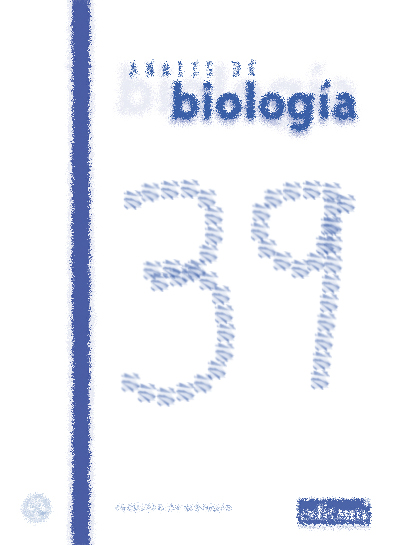Contribution to the knowledge of three Indian Spermacoce L. (Rubiaceae) and some preliminary information about their pollination ecology
Abstract
Undocumented taxonomic characters have been described for Spermacoce hispida L. and Spermacoce articularis L. S. hispida is bimorphic. The flowers are weakly protandrous, nectariferous and self-pollinating. Butterflies, bees and thrips are important as pollinators. The highest natural fruit set evidenced in these species is attributed to auto-selfing and entomophily. Fruits dehisce septicidally in S. hispida and S. articularis and circumscissile mode in Spermacoce pusilla Wall. Seed dispersal is anemo-, baro-, ombro- and hydro-chorous. These species occupy different habitats to avoid competition for pollinators and maximize seed output and expand their distribution range.
Downloads
Las obras que se publican en esta revista están sujetas a los siguientes términos:
1. El Servicio de Publicaciones de la Universidad de Murcia (la editorial) conserva los derechos patrimoniales (copyright) de las obras publicadas, y favorece y permite la reutilización de las mismas bajo la licencia de uso indicada en el punto 2.
2. Las obras se publican en la edición electrónica de la revista bajo una licencia Creative Commons Reconocimiento-NoComercial-SinObraDerivada 3.0 España (texto legal). Se pueden copiar, usar, difundir, transmitir y exponer públicamente, siempre que: i) se cite la autoría y la fuente original de su publicación (revista, editorial y URL de la obra); ii) no se usen para fines comerciales; iii) se mencione la existencia y especificaciones de esta licencia de uso.
3. Condiciones de auto-archivo. Se permite y se anima a los autores a difundir electrónicamente las versiones pre-print (versión antes de ser evaluada) y/o post-print (versión evaluada y aceptada para su publicación) de sus obras antes de su publicación, ya que favorece su circulación y difusión más temprana y con ello un posible aumento en su citación y alcance entre la comunidad académica. Color RoMEO: verde.











